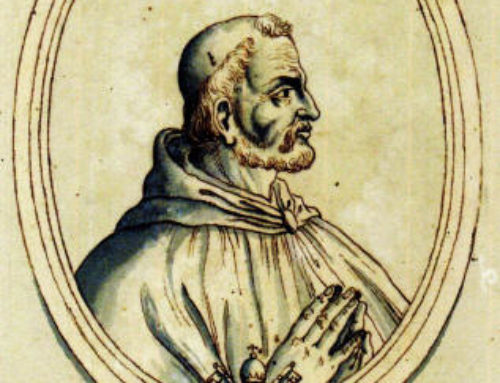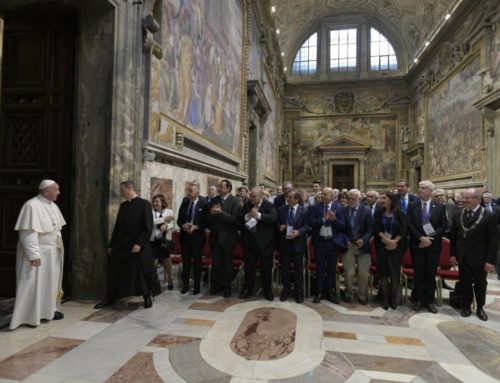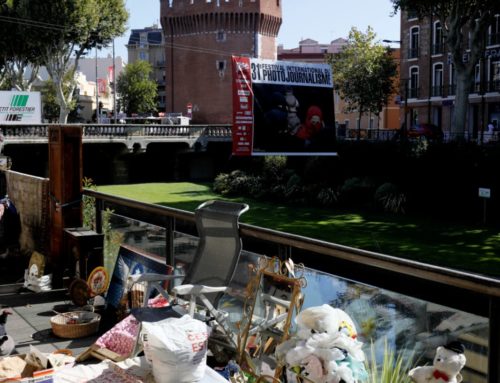INTERNATIONAL PRIZE “JOAO XXI“
PRIX INTERNATIONAL JEAN XXI

| Ruling for the INTERNATIONAL PRIZE OF MEDICAL ETHICS AND DEONTOLOGY JOÃO XXI |
| A prize has been organized by the Association of Portuguese Catholic Doctors and will be continued for as long as judged useful; it will be awarded by the International Federation of Catholic Doctors (FIAMC) according to the following rules:Article 1: It will be called “The International Prize of Medical Ethics and Deontology João XXI” consisting of a special medal with the effigy of this Pope and Portuguese Doctor, and a diploma.
Article 2: The João XXI Prize is meant to stimulate the study of Medical Ethics and Deontology in different countries and to reward, in that field, the best original work written or published in the interval of two International consecutive Congresses of Catholic Doctors. Article 3: Only works, which adhere to the following conditions will be admitted to the competition. Article 4: The competitors will have to send to the Secretariat of the International Federation of Associations of Catholic Doctors or to the place indicated three months before the International Congress of Catholic Doctors, a demand for entry, declaring that they wish to compete for the João XXI Prize, accompanying their demand with seven copies of the work presented for the competition. Article 5: The following will not be accepted for the competition: Article 6: The Directors of the International Federation will choose, well in advance, four well-known and respected personalities from international Catholic circles, who, with the President of the International Federation, will work on the judging panel, which will assess the works presented at each competition. Article 7: The month after the closing of the competition, each member of the judging panel will receive a copy of the works sent in. Article 8: There will be no appeal against the decisions of the judging panel, which will be passed on a month before the date of Congress by a majority vote (absolute or relative). Once the decision is known, the President of the Judging Panel will pass on its opinion duly authorized, to the Association of Portuguese Catholic Doctors. Article 9: The prize is indivisible. The judging panel has the right not to award it if the works presented seem to it inadequate for the objectives of the initiative, or in disagreement with the demand set up and whenever the medical ethical or deontological literature is not impressive. Article 10: The Prize João XXI will be awarded in an official ceremony at the opening of each International Congress of Catholic Doctors, to the competitor or his representative. Article 11: In case there are no entries for the competition, the judging panel may award the Prize João XXI to the paper presented at the International Congress of Catholic Doctors, which, in his opinion, does best meet the criteria established in Articles 2 and 3. Article 12: It is the task of the International Federation of the Associations of Catholic Doctors to apply this ruling and to deal with contested cases, always in agreement with the Directing Body of the Association of Portuguese Catholic Doctors. |
| Règles d’attribution du PRIX INTERNATIONAL DE ÉTHIQUE ET DÉONTOLOGIE MÉDICALE JOÃO XXI |
| Un prix a été créé par l’Association des Médecins Catholiques Portugais et sera maintenu aussi longtemps que jugé utile; la Fédération Internationale des Associations de Médecins Catholiques (FIAMC) l’attribuera selon les règles suivantes:Article 1: Ce prix sera appelé “Prix International de Éthique et Déontologie Médicale João XXI” et consistera en une médaille spéciale à l’effigie de ce Pape et médecin portugais et un diplôme.
Article 2: Le Prix João XXI est censé stimuler l’étude de l’Éthique et de la Déontologie Médicale dans différents pays et récompenser dans ce domaine le meilleur travail original écrit ou publié dans l’intervalle de deux Congrès Internationaux consécutifs de la FIAMC. Article 3: Seuls les travaux, qui adhèrent aux conditions suivantes seront admis à concourir. 1. Du fait du choix du concurrent, le travail doit avoir un lien avec l’Éthique ou la Déontologie Médicale et les questions éthiques ou déontologiques les plus débattues au moment de la compétition. 2. Chaque fois que la FIAMC le jugera utile, elle pourra indiquer d’avance, au sein des vastes domaines de l’Ethique ou de la Déontologie Médicale, le thème ou les thèmes sur lesquels la compétition sera basée. 3. Les travaux doivent être originaux, et de préférence non encore publiés. Les études tirées de travaux déjà publiés, ou d’extraits empruntés, ne seront pas acceptées. 4. Les travaux doivent être écrits en langue originale, mais s’il ne s’agit pas du français ou de l’anglais, ils doivent être accompagnés d’une traduction en une de ces deux langues sous la responsabilité de l’auteur. 5. Les travaux doivent être tapés en double interligne, recto seul, 20 à 30 pages, avec sept copies. Si le travail est déjà imprimé, l’auteur peut remplacer les copies tapées des copies imprimées. Article 4: Les concurrents devront envoyer au Secrétariat de la FIAMC ou au lieu indiqué trois mois avant le Congrès International des Médecins Catholiques, une demande déclarant qu’ils veulent concourir pour le Prix João XXI, en accompagnant leur demande de sept copies du travail présenté. 1. Les travaux ne seront pas retournés; le texte pourra être publié dans les journaux des Associations de Médecins Catholiques; il suffira de le demander au Secrétariat de la FIAMC. 2. Quant au travail qui gagnera le prix, l’Association des Médecins Catholiques Portugais se réserve le droit de le publier entièrement dans son périodique “Acção Médica“. Il pourra aussi être publié dans une édition spéciale par la FIAMC. Article 5: Ne seront pas acceptés pour la compétition: 1. Les travaux ayant un optique contraire à la doctrine de l’Église Catholique; 2. Les travaux ayant pour auteurs des membres du jury. Article 6: Les Directeurs de la FIAMC choisiront d’avance quatre personnalités bien connues et respectées des cercles catholiques internationaux, qui, avec le Président de la FIAMC constitueront le jury qui évaluera les travaux présentés. 1. Les cinq membres du jury devront être de pays différents, aussi éloignés que possible les uns des autres, mais il devra y avoir un portugais désigne par la Direction de l’Association des Médecins Catholiques Portugais, puisque le prix a été fondé par une institution portugaise. 2. Un des membres du jury doit être un prêtre ayant une connaissance profonde des problèmes éthiques et déontologiques, et un autre membre, au moins, Professeur de Éthique ou Déontologie Médicale dans une faculté de médecine. Article 7: Le mois après la fermeture de la compétition, chaque membre du jury recevra une copie des travaux envoyés. Article 8: Les décisions du jury seront sans appel. Celles-ci seront prises un mois avant la date de congrès par un vote à la majorité absolue ou relative. Une fois la décision connue, le Président du jury la transmettra à l’Association des Médecins Catholiques Portugais Article 9: Le prix est indivisible. Le jury a le droit de ne pas l’accorder si les travaux présentés semblent inadéquats vis-à-vis des objectifs du prix, ou en désaccord avec la demande, et chaque fois que la littérature médicale éthique et déontologique ne fait pas bonne impression. Article 10: Le Prix João XXI sera attribué lors d’une cérémonie officielle à l’ouverture de chaque Congrès de la FIAMC, au concurrent ou à son représentant. Article 11: Dans le cas où il n’y aurait pas de concurrent, le jury peut accorder le Prix João XXI à un papier présenté au Congrès de la FIAMC qui, à son avis, répond le mieux aux critères établis des Articles 2 et 3. Article 12: C’est la tâche de la FIAMC d’appliquer ce règlement, et de résoudre les cas litigieux toujours en accord avec le Bureau de l’Association des Médecins Catholiques Portugais. |
| JOHN XXI THE PHYSICIAN WHO BECAME POPE By Salvino Leone |
||||||||||||||||||||||||||||||||||||||||||||||||||||||||||||||||||||||||||||||||||||||||||||||||
| SUMMARYIn the XII century a Portuguese doctor, Pedro Hispano, became Pope with the name of John XXI. Before his election to Peter’s throne, he was Professor of Medicine at the University of Siena and a quite famous philosopher. His Summulae Logicales was, probably, the most used study book of philosophy in his time. That is the reason why Dante Alighieri quotes him in the Divina Commedia. As a medical doctor he is remembered especially on account of his ophthalmological works and of the Thesaurus Pauperum, a mixture of health education and preventive medicine. He died crushed by the fall of his bedroom’s roof. Even when he was Pope he continued to practice the medical art, so that people said that his tragic death was God’s punishment because of the sorcery he practiced. | ||||||||||||||||||||||||||||||||||||||||||||||||||||||||||||||||||||||||||||||||||||||||||||||||
| 1. BIOGRAPHYYouth Pedro Hispano (Peter of Spain)’s childhood and adolescence are enfolded in mystery, or at least marked by a great biographical uncertainty; conjectures are far more numerous than certainties. Some scholars, whose most authoritative contemporary representative is José Francisco Merinhos, doubt the single identity of this figure1. The life and works of Pedro Hispano, philosopher, physician and subsequently Pope should in fact be attributed to three different persons: a Dominican friar from Northern-Central Spain, a Portuguese philosopher, a Spanish physician who became Pope taking the name of John XXI. However, the documentation that has been provided, which we cannot summarize here, does not seem to be able to definitely and unmistakably demolish the sounder and more abundant documentation attesting to the uniqueness of the figure of Pedro Hispano. We will therefore follow the “traditional” thesis with more certainty. Pedro (who later on will be nicknamed “hispano”) was born in Portugal, probably in Lisbon, between 1210 and 1220. Lisbon as Pedro’s place of birth is reported in the oldest accounts2, such as the Historia Satyrica written in the first half of the XIV century by the Franciscan friar Paolino, and the 1331 Cronica by M. Polonius. His first biographer3, on the basis of some considerations concerning his election to the Papacy, fixed his date of birth in the year 1226, while more recent studies tend to anticipate it to the preceding decade4. Considering the more certain chronology of some future stages of his existence, plausible only if they refer to a young but not too young adult, I would also agree on a rather low dating: about 1210. When he was born, he was given the second name Julião, like his father. In fact, he was the son of physician Julião Rebelo and of lady Teresa Gil, of noble lineage. Due to a mistake by some Italian chroniclers, in the past someone thought he belonged to the Medici Florentine family, only because in some texts the term medicus (actually a title, not a surname) is added to his name. As to the adjective Hispano, it is in all likelihood an onomastic attribute given to him during his student years in Paris. Other figures of the time carry the same nickname which refers to the whole Iberian peninsula, without any geographical distinction between Spain and Portugal. However, in the introduction to some of his works, he is clearly termed Pedro Hispano Portugalense. The presence of his father, a physician, can certainly justify (as a sufficient, but not necessary, condition) the young man’s future orientation towards the medical art. As all boys his age, his first “training agency”, as we like to call it now, was the Episcopal School where he attended the trivium and the quadrivium classes. In order to carry on his studies, the young Pedro had no other alternative but to go and study abroad, since in Portugal the first steps towards a real university or “advanced school” were taken as late as in 1288. Naturally, this was not commonly done by all students: it was only a step which those who could afford it economically and above all those who had promising aptitudes and the will to do it took. Perhaps on account of its fame or perhaps simply because it was nearby, Pedro went to Paris. Many of the studies tracing his biographical profile maintain that, since at the time St. Albert the Great was teaching in Paris, it is likely that the Portuguese student attended some of his classes. Even if possible, this supposition seems improbable. St. Albert, in fact, went to Paris to hold his commentary course to Peter Lombard’s Aphorisms in 1245. If we consider the certain date of 1247 when Pedro Hispano became professor at the University of Siena, it is impossible to place all the intermediate events that took place in the meanwhile within a pair of years only and, in any case, it is also improbable that this “newly-trained” youth was already a professor. Medical training Professor of Medicine in Siena The ascent to the Pontificate |
||||||||||||||||||||||||||||||||||||||||||||||||||||||||||||||||||||||||||||||||||||||||||||||||
| 2. THE PHILOSOPHICAL AND THEOLOGICAL WORKSAn overview 8 Philosophical works and 5 theological works are attributed to Pedro Hispano: the Summulae Logicales, in 12 volumes which in the Middle Ages were the most widespread school “textbook”; the Liber de Anima which discusses the question with the attention and competence of a physician with reference to some “physiological” implications; the commentaries to Aristotle: De morte et vita et de causis longitudinis et brevitatis vitae and the De Anima; the Tractatus maiorum fallaciarum; the Syncategoremata; the commentary Super de sensu et sensato. As to theological publications, they are all comments to the Pseudo-Dionysius Areopagite: De celestio hierarchia, De ecclesiastica hierarchia; De divinis nominibus; Theologya mystica; Epistulae. The “Summulae logicales”
However, even such authoritative witness was questioned by those who maintain that Dante’s Pedro Hispano was in fact a homonymous preaching friar28. Such thesis was refuted with authority by Giovanni Petella, an Italian author who lived at the turn of the XIX century29, and was definitively demolished by other authors in the first half of the XX century30.
Such subdivision perfectly mirrors the one used in Medieval teaching. In fact, the first six books correspond to the treatises of Aristotelian logic31, while the remaining six illustrate the “new logic” of Scholasticism. The “De anima” The Commentary to the Pseudo-Dionysius |
||||||||||||||||||||||||||||||||||||||||||||||||||||||||||||||||||||||||||||||||||||||||||||||||
| 3. THE MEDICAL WORKThe “Thesaurus Pauperum” It is Pedro Hispano’s most important medical text, largely widespread throughout the Middle Age. It presents two basic characteristics: on the one hand the love for medical science (the work can, in fact, be considered one of the first treatises of preventive and social medicine), on the other hand the love for common people, for the “man in the street” as we would say today, for the “poor”, a category to which every sick person belongs. In this work the aphorism of the Hippocratic school: “where there is love for the (medical) art there is love for man” is fully represented. From the XII to the XVIII century the Thesaurus Pauperum, of which we have some seventy manuscripts (many of them in Italy)43, had several editions and translations: nine Portuguese, twenty-four Spanish, seventeen French, five English and thirteen Italian. The latter are especially important, above all on account of their antiquity (the first ones appeared in Florence, by Bartolomeo de Libri, and in Venice, by Gioani Ragazo and Gioani Maria Compagni in 1494). Some scholars think that the treatise was written in Italian, rather than in Latin. Pedro Hispano would thus have written it when he was teaching at the University of Siena. Such supposition is, however, improbable since although the book intends to spread the subject matter, it is nonetheless a scientific text, and the language of science was exclusively Latin. Rather, a possible “vernacularization” would have been made in French, not in Italian44. The analysis of the different manuscripts indicates that the original text was greatly manipulated and integrated sometimes by inserting in its body the marginal notes of some commentator, sometimes by filling up the empty spaces between one chapter and the next. Without possessing the original manuscript, it is difficult to ascertain with certainty which one was the draft, even if we can surely draw near to it on the basis of a careful critical examination of the texts and of the reconstruction of the main “manuscript families”. The Author (whose name does not appear in all the manuscripts) writes a popular didactic work, to be used by medicine students, collating texts and aphorisms by other authors, common knowledge of the pharmacopoeia of the time, ordinary praxes and, certainly, also proposing his personal contributions. It is not always easy to discern the different attributions, and in any case, in the style of that period, this was not extremely important after all. The Thesaurus Pauperum combines the history of philology with the history of medicine; interestingly, it abundantly presents what had to be XIII century “medical Latin”, that was of course different from classical Latin but, in some respects, also from the Medieval spoken Latin that was being vernacularized at the time. The text we refer to here is the one reconstructed, in its wording and in the sequence of the chapters, by Maria Helena da Rocha Pereira. It is made up by a prologue, by the systematic treatment of the subject in 68 chapters, by a Treatise on fevers and by an appendix which features different contents: practical remedies, classification of substances, index of drugs, etc. The Prologue, in the style of the time but also on account of the particular religious sensibility of the author, opens the work in the name of the Trinity and of “Christ Physician”, relating human science to the source of all knowledge from which it derives: “In the name of the Holy, undivided Trinity who created all things giving everything its own virtue, by which the wise were given their wisdom and scientists their science, I undertake a work that is superior to my strength. I confide in the help of the Holy Trinity who through us brings all of our actions to conclusion, like through an instrument. And I ask that this work be called Thesaurus of the Poor, offering it to Him who is called Father of the Poor”. After a firm exhortation to know the origin of evils and the related remedies, there follows a brief reminder, surely of Hippocratic matrix, but fully in line with Christian sensibility, concerning some basic deontological rules: “Refrain carefully and faithfully from prescribing drugs to induce death or abortion or to take pregnancy away, seduced by money or by the vanity of love“. After the above, with a humorous rather than religious association of ideas, he states that since Christ is the head of the faithful, we shall start with the diseases of the head, to get to the feet. Then the several chapters follow, which we list in their totality devoting later on particular attention to some more meaningful passages:
The remedies proposed are the ones common to the herbal pharmacopoeia of the time (acacia, ribwort, cinnamon, henbane, mallow, rue, verbena, etc.) or the ones based on the authority of the ancient masters (Galen, Dioscorides, Cyranides, etc.). Both types are more or less useless but at list safe. Others instead, equally effective, compelled the poor wretch to perform a series of distasteful procedures: The “Regimen sanitatis” De Regimine Sanitatis Liber de morbis oculorum |
||||||||||||||||||||||||||||||||||||||||||||||||||||||||||||||||||||||||||||||||||||||||||||||||
| BIBLIOGRAPHYANTUNES J., O percurso e o pensamento politico de Pedro Hispano, Actas do Congresso Internacional “IX Centenário da dedicação da sè de Braga”, Braga 1990, pp. 126-184 BERGER A.M., Die Ophtalmologie des Petrus Hispanus mit deutscher Übers, und Kommentar, München 1899 BRAZÃO E., João XXI, o único papa português in “Anais da Academia Portuguesa de Historia 12 (1980) pp. 385-403 CRAVEIRO DA SILVA R., Pedro Hispano (177-1977) ála luz dos últimos estudos in “Revista Portuguesa de Filosofia” 33 (1977) pp.113-123 DA CRUZ PONTES J.M., A obra filosofica de Pedro Hispano portugalense: novos problemas textuales, Universidade de Coimbra, Coimbra 1972 — — Pedro Hispano Portugalense e as controversias doutrinasis do sec. XIII, Instituto de Estudos Filosoficos 1964 (tesi dottorale) — — Para situar Pedro Hispano portugalense na historia da filosofia in “Revista Portuguesa de Filosofia” 24 (1968) pp.21-45 DA GAMA CAEIRO F., Novos elementos sobre Pedro Hispano in “Revista Portuguesa de Filosofia”, 22 (1966) pp.157-174 DA ROCHA PEREIRA M.H., A obra médica de Pedro Hispano in “Memórias da Academia de Ciências de Lisboa” 18 (1977) pp.193-208 — — , Obras médicas de Pedro Hispano, Acta Universitatis Conimbrigensis, Combra 1973 DE CAIRES A., O perfil psicologico do Papa João XXI, Accão Medica (1946) pp.148-165 DE RIJK L.M., On the life of Peter of Spain in “Vivarium” 8 (1970) 123-154 DI FERDINANDO R. , L’oculistica di Papa Giovanni XXI in “Realtà Nuova”, 35 (1960) 651-661 GHIBELLINI M., Il “Libro degli occhi” di Pietro Hispano, Atti del XXI Congresso Internazionale di Storia della Medicina, Siena 1968, II Roma s.i.d., 1139-1149 KÖHLER J.T. Vollständige Nachricht von Pabst Johann XXI, welcher unter dem Nahmen Petrus Hispanus als ein gelerh Artz und Weltweiser berühmt ist, Göttingen, bey Victorinus Bossiegel, 1760 LAURENT M.H., Il soggiorno di Pietro Hispano a Siena, , Nuova Serie, IX (1938) pp.42-47 MEIRINHOS, J. F., Pedro Hispano Portugalensis? Elementos para uma diferenciação de autores, Revista Española de Filosofia medieval, 3 (1966) pp.51-76 MOREIRA DA SE’ A., Pedro Hispano e a crise de 1277 da Universidade de Paris, in “Boletin da Biblioteca da Universidade de Comibra” XXII (1955) pp.221-241 MOREAU J., Un Pape portugais: Jean XXI dénomé Pierre d’Espagne in “Teoresi” 34 (1979) pp.391-407 PARAVICINI BAGLIANI A., La cour des papes au XIIIe siècle, Hachette, Paris 1995 — — Medicina e scienze della natura alla corte dei papi nel Duecento, Centro Italiano di Studi sull’Alto Medioevo, Spoleto 1991 SCHIPPERGERS H., Artz im Purpur, in “Materia Medica Nordmark” XIII/15 (1961) 591-600 SEVERAL AUTHORS, Numero monografico su Pedro Hispano, Revista Portuguesa de Filosofia, 8 (1952) STAPPER R., Papst Iohannes XXI in “Kirchengeschichtichen Studien”” IV, fasc. 4 Münster 1898 — — Pietro Hispano e il suo soggiorno in Siena, “Bollettino senese di Storia Patria”, XXVIII (1921) p.426 ZAMBRINI F., Volgarizzamento del trattato della cura degli occhi di Pietro Spani, Bologna 1873The last encyclical by John Paul II, Fides et ratio, presents a complex and extensive treatment of the theme of the relationship between philosophical knowledge and religious faith. In such wider frame there is also the alleged conflict between science and faith. The “Galileo case” is often mentioned as an emblematic example of such alleged conflict. Actually there are other significant, though not very well known, examples whereby a positive union between science and faith has been realized. John XXI is a brilliant witness to this, a Pope who ascended Peter’s throne after having been a first-class physician, in fact who kept practicing medicine even when he was Pope. Professor at the University of Siena, he wrote what is probably the first treatise of “social medicine”, bringing into medical works a powerful humanitarian impetus and a particular attention to the poor. In this sense he can surely be considered a true precursor of modern bioethics. The study by Salvino Leone we are presenting is one of the very few contributions originally written in the Italian language to the knowledge of this figure who would deserve a more careful historical and ecclesiastical memory. |
||||||||||||||||||||||||||||||||||||||||||||||||||||||||||||||||||||||||||||||||||||||||||||||||
| FOOTNOTESI wish to acknowledge the following persons for their prompt and useful collaboration: Miguel Sanchez, Professor of History of Medicine at the Complutense University in Madrid; P. Jorge Texeira de Cuñha, Professor of Moral Theology at the Porto Faculty of Theology; Walter Osswald, Professor of Pharmacology at Lisbon University, former President of the World Federation of Catholic Medical Associations.1. J.F. Meirinhos, Petrus hispanus Portugalensis: elementos para uma difereciação de autores, in “Revista Española de Filosofia medieval” 3 (1996) pages 51-76 2. Cf. T. Carreras Y Artau E J. Carreras Y Artau, Historia de la Filosofia Española, Madrid, 1939, I, pages 101-103 3. J.T. Koehler, Vollständige Nachricht von Pabst Johann XXI welcher unter dem Nahmen Petrus Hispanus als ein gelehter Arzt und Weltweiser berühmt ist, Göttingen, bei Victorinus Bossiegel, 1760. 4. Cf. J.M. Da Cruz Pontes, Para situar Pedro Hispano Portugalense na história da filosofia, in “Revista Portuguesa de Filosofia” 24 (1968) p. 23. 5. Cod. Vat. Lat. 2661, fol. 62 v. (in Da Cruz Pontes, op. cit. , p. 32) 6. Cf. Da Cruz Pontes, op. cit., p.33 7. S. Tavares, Pedro Julião, vida e obra, Revista Portuguesa de Filosofia 8 (1952) p. 237 8. P. Stella and A.M. Moschetti, Enciclopedia Filosofica, Sansoni, Florence 1957, III, col. 1377; D. Odon Lottin, Exposicão sobre os livros do Beato Dionísio Areopagita in “Bullettin de Théologie ancienne et médiévale”, VIII (1961) p. 975; J. Carreras Y Artau e J. Tusquets Terrats, Apports Hispaniques à la Philosophie Chrétienne de L’Occident, Louvain-Pairs, 1962, p.16. 9. A. Paravicini Bagliani, Medicina e scienze della natura alla corte dei papi nel Duecento, Centro Italiano di Studi sull’Alto Medioevo, Spoleto 1991, 77-78. 10. A. Zdekauer, Sulle origini dello Studio Senese, Siena 1898, p. 16 ff. 11. Cod. lat. 1382 f. 28 (quoted by R. Stapper, Pietro Hispano ed il suo soggiorno in Siena, in “Bollettino senese di Storia Patria”, XXVIII (1921) p.426 12. Diplomatico, Prov. S. Salv. in Lecceto 1247, 5 February, Siena State Archive, Suppressed Congregations Fund 13. As Laurent rightly observes, the document is wrongly dated 1547 because in Siena (just like in Florence) the year started on March 25, date of the Annunciation (Il soggiorno di Pietro Hispano a Siena in “Bollettino Senese di Storia Patria”, Nuova Serie, IX (1938) 42-47) 14. Cf. preceding note. 15. Biccherna was the name used for the town Treasury in Siena from the 13th to the 18th century. Its registers, the so-called “Biccherna books”, are of great historical and also artistic value, since the front part of the binding is painted. Such boards are also called biccherne. 16. Ib., 36 17. PMH, Leges et consuetudines, I, 185, 687, 689, 693. Cited by F. Da Gama Caeiro, Novos elementos sobre Pedro Hispano, Rev. Port. de Filosofia, 22 (1966) pages 157-174. 18. AV. Reg. Vat. 25, fl 257 (for all these documents: F. Da Gama Caeiro, op. cit). 19. ANTT, Sé de Coimra, Cabido da Sé, maço 16, n. 27 20. ANTT, Sé de Coimbra, Pontifícios, maço 4 21. ANTT, Sé de Comibra, maço 3, n. 45 22. Actually, the last Pope named John had been John XIX (1024-1032), but due to an error in numbering Pedro Hispano, instead of the succession sequence number XX, was assigned the XXI. 23. J.M. Da Cruz, op. cit., 24 24. A. Callebaut, Jean Pecham, O.F.M. et l’augustinisme. Aperçus historiques (1236-1285) in “Archivium Franciscanum Historicum” XVIII (1925), pages 460-461 (quoted by Da Cruz, ib.) 25. E. Ehinger, Synopsis organi Aristotelici Michaele Psello auctore, Wittemberg 1579 26. C. Thurot, Revue Critique d’Histoire et de Literature, n. 13 (1867) pages 194-203. Actually the thesis had already been refuted in volume 160 of Migne’s Greek Patrology, attributing to the Byzantine patriarch Gennadios (1400-1464) the translation into Greek of Pedro Hispano’s work (J.M. Da Cruz Pontes, op. cit., pages 18-19). For a more comprehensive critical study of the whole issue cf. R. Stapper, Die Summulae logicales des Petrus Hispanus und ihr Verhältnis zu Michael Psellus” in “Festschrift zum elfhundertjähren Jubiläeum des deutschen Campo Santo in Rom”, Freiburg 1897, pp.130-138. 27. Chronica fratris Salimbene de Adam Ordinis Minoris, in “Monumenta Germaniae Historica”, Holder-Egger, Nannoverae et Lipsiae 1913, XXXII, p.304. 28. Benvenuto Rambaldi from Imola was the first to put forth such doubt towards the end of the XIV century, followed by other critics in the XVIII century and by HD. Simonin at the beginning of the XX century. 29. G. Petella, Sull’identità di Pietro Ispano, medico in Siena e poi papa col filosofo dantesco in “Bollettino senese di Storia Patria”, 1899, VI, pages 277-329 30. M.H. Laurent, M. Grabmann e B. Geyer, all quoted by Da Cruz Pontes, op. cit., p.23. 31. More specifically: De propositionibus to the “Perihermeneias” – On interpretation; De predicabilibus to the Commentary to the Isagoge by Porphyry; De praedicamntis to the Categories; De Syllogismis to the Prior Analytics; De Locis to the Topics; De Fallaciis to the Sophistical Refutations (C. Abranches, Pedro Hispano e as “Summulae Logicales”, Rev. Portuguesa de Filosofia. 8 (1952) p. 252 32. C. Abranches, op, cit., 255 33. Id., 259 34. Pedro Hispano, Scientia libri de anima, publicados e anotados por Manuel Alonso, S.I., Consejo Superior de Investigaciones Cientificas, Madrid, 1941 35. De anima, 107 36. D. Martins, O “De Anima” de Pedro Hispano, in “Revista Portuguesa de Filosofia”, 8 (1952) 263 37. De anima, 157 38. De anima, 237 39. D. Martins, op.cit., 274 40. See De anima 326-327 41. De anima, 378 42. M. Martins, Os Comentarios de Pedro Hispano ao Pseudo-Dionisio Areopagita, Revista Portuguesa de Filosofia, 8 (1952) p. 314 43. Eight are held by the Central National Library and one is held by the Medicea-Laurenziana Library in Florence; one is held by the Archiginnasio Public Library in Bologna; one by the Padua University Library; four by the Siena Public Library; one by the Rome Casanatese Library; nine by the Vatican Apostolic Library (M.H. Da Rocha Pereira, Obras Médicas de Pedro Hispano, Coimbra University 1972, to whom I owe much with regard to this section) 44. Id., 4 45. Sore throat, angina 46. Ancient term for pleuritis 47. Abscess 48. Quoted (without further bibliographic indications) in F. Zambrini, Volgarizzamento del trattato della cura degli occhi di Pietro Spano, Gaetano Romagnoli, Bologna 1873, XIV 49. Ib. VIII 50. Op. cit. 51. A. Paravicini Bagliani, op. cit., 131-133 52. Op. cit. chapter 14. |








